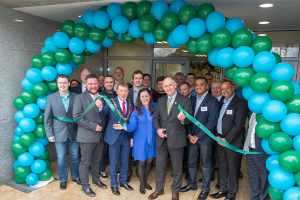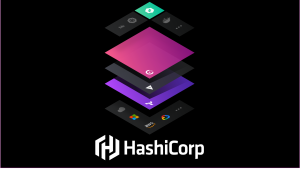The Next Big Thing Won’t Save Companies Money Warns Wikibon’s Scott Lowe
![]() The “Next Big Thing” is not necessarily a money-saver for IT, and the next few on the horizon are in that category, warns Wikibon Analyst, consultant, and former CIO Scott Lowe. In a recent Wikibon Professional Alert, Lowe looks at the probable financial impact of virtual desktops, further data center virtualization, bring-your-own-device (BYOD), and cloud services He finds that while these may offer significant advantages in other areas, they are unlikely to provide major savings and in some cases may increase IT expenditures.
The “Next Big Thing” is not necessarily a money-saver for IT, and the next few on the horizon are in that category, warns Wikibon Analyst, consultant, and former CIO Scott Lowe. In a recent Wikibon Professional Alert, Lowe looks at the probable financial impact of virtual desktops, further data center virtualization, bring-your-own-device (BYOD), and cloud services He finds that while these may offer significant advantages in other areas, they are unlikely to provide major savings and in some cases may increase IT expenditures.
VDI technology is maturing and offers several advantages, particularly as the need to provide a standard corporate desktop image across an increasingly diverse group of tablets and smartphones as well as desktops and laptops grows. However, the early promises of huge financial benefits have for the most part not panned out; IT has found that VDI merely shifted expenses from desktop/laptop replacement to beefing up storage, servers, and network switches as well as buying the hypervisor and extra software licensing, and in many cases the terminals themselves turned out to be more expensive that expected.
Server virtualization, of course, created large initial savings by increasing average server utilization from 15% to 85%, supporting server consolidation, cutting power and cooling requirements, and, in many cases, extending the useful lifespan of existing data centers for years. However, once that initial huge savings is realized, further virtualization including storage and network virtualization, is unlikely to produce more significant savings and may even drive added investment in underlying infrastructure. It will, however, support new workload availability features and disaster recovery opportunities as well as other benefits that make the investment worthwhile.
BYOD is a current trend in organizations faced with increasing populations of employees who want to use their tablets – iPads, various Android choices and, in the future, potentially two classes of Windows 8 tablets – both in the office and outside, in mobile settings. Despite promises in the marketplace that BYOD will save companies money as employees buy their own end-point hardware, he warns that BYOD brings challenges that promise to cost money. BYOD will require added investment in security and in supporting corporate standard images and software on a variety of non-standard devices including multiple, semi-incompatible versions of Android. It also will create added stress on the IT environment that will require extra infrastructure investment. It also may push some companies not presently considering desktop virtualization into an investment in a VDI hypervisor as the only way to provide a standard image on the multiplicity of devices.
Cloud services are also being hyped as money savers for internal IT. Lowe, however, sees these promises as suspect in the long term. Organizations, he writes, may realize savings by moving some applications to SaaS or IaaS providers, although the amount of these savings versus running those applications internally on a virtualized infrastructure may be a fraction of what is often promised. However, over time those savings will erode as organizations find they need to increase their contract management and integration services. Again, however, including cloud services in the overall IT strategy going forward can provide other advantages, ranging from the ability to localize specific services near remote locations to improve the quality of service, to taking advantage of service vendors’ multiple data centers to create essentially an instant fail-over system in case of service interruption at the primary data center site, that may provide important advantages beyond cost savings.
The lesson Lowe derives from this is that CIOs should look beyond the direct savings associated with new IT technologies, even when those appear to be substantial, both to examine the added hidden costs and the non-financial advantages that these technologies may provide. It is these that in many cases may become the main justifications for adoption a new “next big thing” – or not.
As with all Wikibon research, this case history is available free of charge on the Wikibon.org Web site. IT professionals are invited to register for free Wikibon membership, which allows them to post comments, correct articles, and post their own research. It also allows them to receive invitations to Peer Incite Meetings, at which users present on their experiences solving specific common issues such as data backup and recovery using advanced solutions, and to receive the Wikibon Peer Incite newsletter.
A message from John Furrier, co-founder of SiliconANGLE:
Your vote of support is important to us and it helps us keep the content FREE.
One click below supports our mission to provide free, deep, and relevant content.
Join our community on YouTube
Join the community that includes more than 15,000 #CubeAlumni experts, including Amazon.com CEO Andy Jassy, Dell Technologies founder and CEO Michael Dell, Intel CEO Pat Gelsinger, and many more luminaries and experts.
THANK YOU











